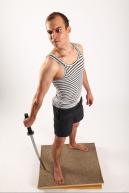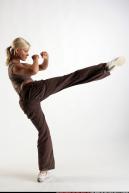Mastering Human Anatomy: A Guide for Artists Across Cultures and Traditions
Human anatomy has been a cornerstone of artistic expression throughout history, with artists striving to accurately depict the human form on canvas, stone, or paper. From classical Greek sculptures to Islamic calligraphy and illustration, the study of human anatomy has been integral to the development of various art forms. This article delves into the evolution of human anatomy in art across cultures and traditions, exploring how different civilizations have perceived and represented the human body.
Can Muslims Gamble?
Interestingly, while human anatomy has played a significant role in artistic expression, it is often overlooked that Islam has a complex history with gaming and chance. This leads us to the question: can Muslims gamble? While some interpretations of Islamic law (Sharia) prohibit gambling outright, others permit it under specific circumstances, such as charity events or skill-based games like chess or backgammon. However, this topic is not directly related to human anatomy but serves as an example of how complex cultural and religious influences shape artistic expression.

Classical Greece: The Birthplace of Western Art
In the realm of classical Greek art, human anatomy was considered essential for conveying a sense of balance and harmony in sculptures and paintings. Artists like Phidias and Praxiteles created iconic works that showcased the beauty and perfection of the human form. Their depictions of nude figures emphasized the ideal proportions and musculature of the body, which were later codified into the famous "Vitruvian Man" diagram by Leonardo da Vinci.
Islamic Art: A Focus on Line and Pattern
In contrast to classical Greek art, Islamic art has traditionally prioritized line and pattern over realistic depictions of the human form. The emphasis on geometric shapes and intricate patterns created a sense of order and beauty that was deemed more appealing than figurative representation. This aesthetic bias is exemplified in the stunning tilework and mosaics found in mosques and palaces across the Islamic world.
The Influence of Islam on Human Anatomy
Despite the emphasis on line and pattern, Islamic art has not entirely overlooked human anatomy. The intricate illustrations found in medieval manuscripts and illuminated texts often featured detailed depictions of the human body. These illustrations were frequently accompanied by explanations of the underlying anatomical structures, showcasing an impressive understanding of human physiology.
Artistic Expression Across Cultures
When considering artistic expression across cultures, it becomes clear that human anatomy has been a universal language, transcending geographical and temporal boundaries. Whether in classical Greek sculptures or Islamic calligraphy, artists have consistently sought to capture the essence and beauty of the human form. This shared interest highlights the common thread between seemingly disparate art forms, emphasizing the importance of human anatomy as a fundamental aspect of artistic expression.
Teaching Human Anatomy: A Guide for Artists
For aspiring artists seeking to master human anatomy, several key principles can be distilled from the examples discussed above:
- Observe and Study: Observe the human form in its various states, from relaxed poses to dynamic movements.
- Understand Proportion and Scale: Develop a keen sense of proportion and scale to create balanced and harmonious compositions.
- Focus on Line and Pattern: Experiment with line and pattern techniques to capture the essence of Islamic art forms.
- Explore Different Cultural Perspectives: Delve into various cultural traditions, such as classical Greek or Islamic art, to broaden your understanding of human anatomy.
Conclusion
Human anatomy has been a cornerstone of artistic expression throughout history, shaping various art forms across cultures and traditions. By exploring the evolution of human anatomy in art, artists can gain a deeper appreciation for the common thread that unites seemingly disparate styles. Whether you're an artist or simply interested in learning about human anatomy, this guide provides a comprehensive introduction to the fascinating world of artistic expression.
Recommendations
For those looking to dive deeper into human anatomy and its role in art, we recommend:
- Leonardo da Vinci's Vitruvian Man: Study the famous drawing by Leonardo da Vinci, which represents the ideal proportions of the human body.
- Islamic Art and Calligraphy: Explore the intricate patterns and illustrations found in medieval manuscripts and illuminated texts.
- Classical Greek Sculpture: Examine the works of Phidias and Praxiteles to understand the emphasis on balance and harmony in classical Greek art.
Further Reading
For more information on human anatomy, its role in art, or Islamic gaming laws, consider consulting the following sources:
- "The Vitruvian Man" by Leonardo da Vinci
- "Islamic Art and Architecture" by Howard Crane
- "Classical Greek Sculpture: The Art and Culture of Greece, 500-323 BC" by John Griffiths Pedley
By exploring these topics and resources, artists can gain a deeper understanding of human anatomy and its significance in artistic expression.







